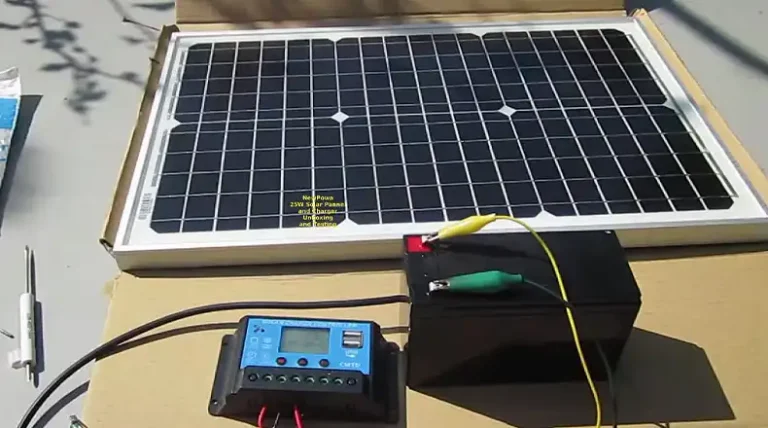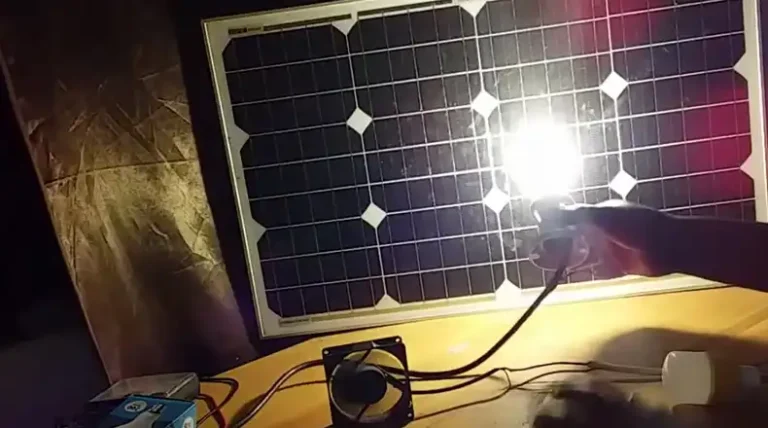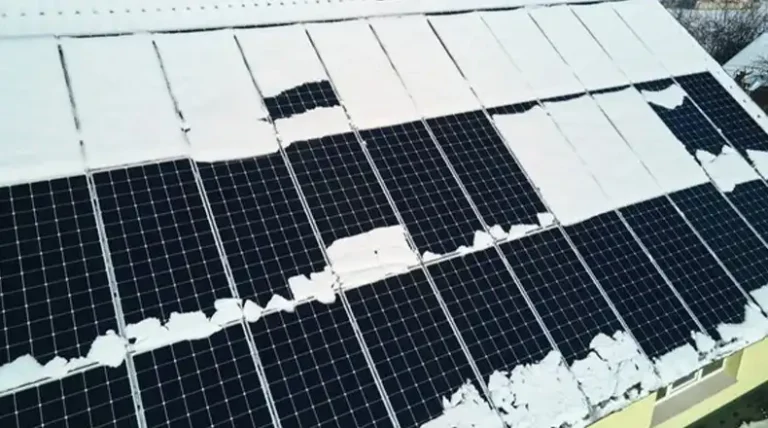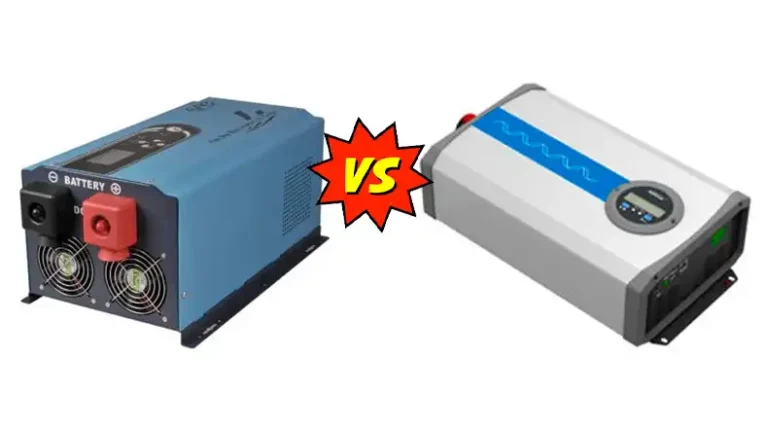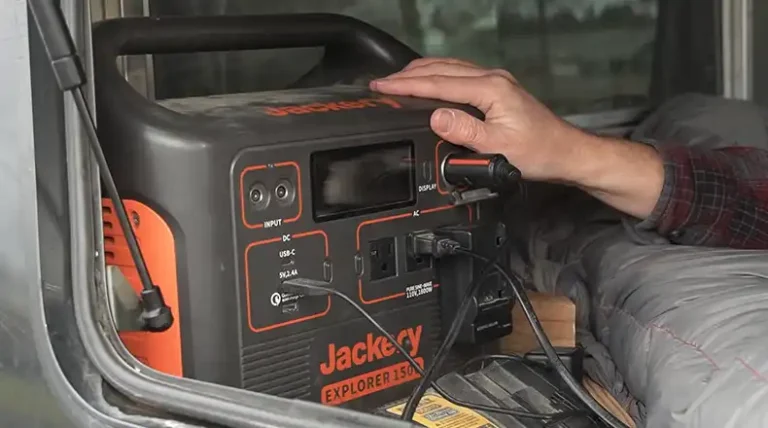How to Size an Inverter for a Solar System | What Steps to Follow
You can find many around you who are deploying a solar PV system without correctly sizing the inverters. But it can hamper the system’s optimal performance. However, determining the right inverter size for your specific needs can be confusing for non-experts.
The optimal solar inverter size depends primarily on the power rating of the solar PV array. You need to match the array’s rated output in kW DC closely to the inverter’s input capacity for maximum utilization. Along with the solar panels’ total power, factors like future expansion plans, partial shading, temperature impacts, and grid interconnection limits also impact inverter sizing calculations.
The correct methodology to understand inverter sizing is crucial because an oversized unit will remain underutilized, while an undersized one will throttle solar energy production. Proper inverter sizing also ensures reliable system performance for the device’s lifespan while delivering the fastest return on investment. But don’t worry, I will provide PV array designers, installers, and system owners with a clear framework to size solar inverters confidently. Let’s get started below.
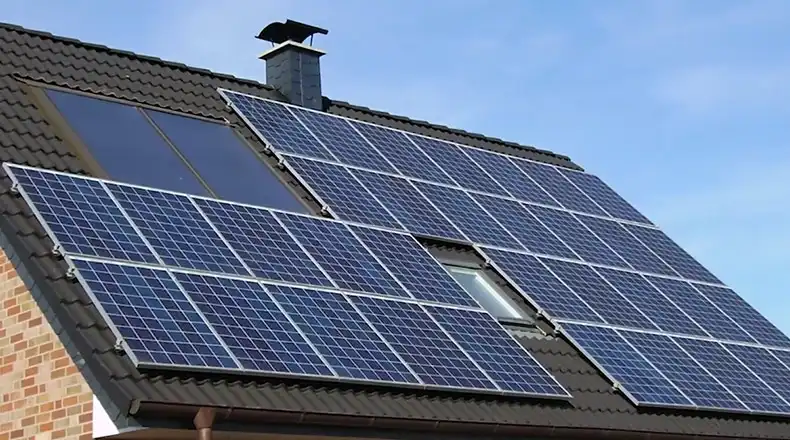
How Inverters Work in a Solar System
Before learning how to properly size a solar inverter, let us first understand the critical role of inverters in the solar PV system.
Definition and Working
The solar panels in a PV array produce direct current (DC) electricity when exposed to sunlight. In contrast, appliances and devices at homes and offices run on standard 120/240-volt alternating current (AC) power.
A solar inverter converts the DC output from the solar panels to usable AC electricity that is compatible with your building’s electrical system. It serves as the crucial interface between the PV array and the grid.
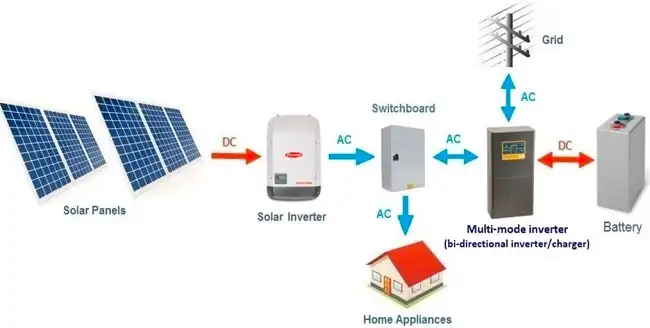
Without appropriately sized inverters, your expensive solar panels will be futile. These intelligent devices also optimize energy harvesting from the solar PV system by maximizing production through MPPT (maximum power point tracking).
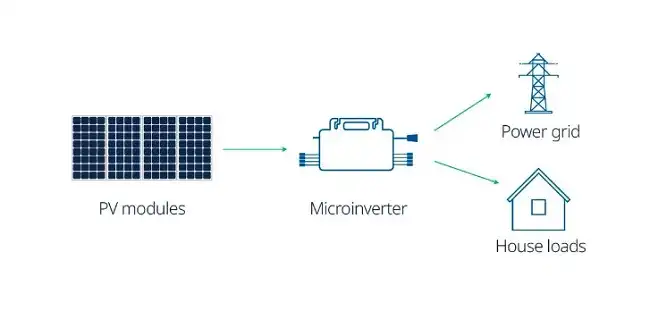
Types of Inverters
Solar inverters are primarily classified into three types based on design and capability:
- String inverters – Designed to work with multiple solar panels connected in a series “string”
- Microinverters – Dedicated to individual solar panels
- Power optimizers – Module-level electronics combined with a central string inverter
String inverters are the most commonly used in residential solar arrays for their balance of affordability and functionality. On the other hand, microinverter and power optimizer architectures have distinct advantages like panel level monitoring and elimination of mismatches.
When sizing your solar PV system, the choice between string, microinverters, or power optimizers is important. In this guide, we focus on string inverters since they monopolize the market currently. The general principle and methodology are valid for other designs too.
Step-by-Step Methods to Size Solar Inverter
Sizing a solar inverter correctly depends primarily on your PV system’s rated capacity and layout. However, several other variables must also be factored into the calculations.
Here is the step-by-step process to determine the optimally sized inverter for your specific solar installation.
Step 1: Determine the Total Power Rating of the PV Array
The first vital step is calculating the total wattage of all solar panels combined in your planned PV array. Every photovoltaic panel has a standardized power rating generally between 300-400 watts.
- For grid-tied solar electric systems, add the rated wattage DC of all panels to determine the overall PV array power in watts.
- In the case of off-grid solar systems, utilize the rated wattage STC (standard test conditions) as the benchmark value for panel capacity.
Also, account for any planned future expansion when tallying the total solar array wattage. Having a buffer capacity will prevent having to upgrade your inverter later to accommodate additional panels.
Example:
- 15 x 350 Watt solar panels = 5250 Watts or 5.25 kilowatts
- Future expansion plans for 5 more 350 panels = Add 1750 = Total 7 kilowatts (5250+1750=7000 Watts)
Step 2: The Various Solar Inverter Sizing Ratios
The general guideline is to choose a solar inverter with a maximum DC input power of 20-35% greater than the total capacity of the solar array. It ensures the unit can handle periods of peak production without getting overloaded.
Installers typically follow one of three common solar inverter sizing ratios:
- Aggregate panel wattage x 1.25
- Aggregate panel wattage x 1.3
- Aggregate panel wattage x 1.35
For our example 7 KW system, this translates to inverter sizes between 8,750 watts and 9,450 watts.
While the above wattage rules apply to a majority of installations, also consider the following factors before deciding the sizing ratio.
Account for Partial Shading
If the solar panels have minor shading issues during certain times of the day, increase the inverter’s capacity to compensate for the reduced energy generation.
Ambient Temperature
High outdoor temperatures will lower solar panel efficiency. So for hotter locations, oversize the inverter slightly to account for performance dips.
Grid Limitations
Check if the local utility has specific limits on solar capacity allowed to interconnect without expensive equipment upgrades. In such cases, you might need to cap the PV system size and adjust the inverter ratio accordingly.
Here are some examples of inverter sizing ratios for different solar systems:
| Manufacturer | Product | Max AC Output (W) | Max DC Power (W) | Ratio Calculation |
| Fronius | Galvo 3.1-1 | 3100 | 4500 | (4500/3100)=1.45 |
| SMA Solar | Sunny Boy 5.0-US | 5000 | 7100 | (7100/5000)=1.42 |
| SolarEdge | SE5000H-US | 5000 | 7750 | (7750/5000)=1.55 |
Step 3: Match the Inverter Voltage to the Solar Array
Along with wattage, ensuring the proper voltage capacity is vital for efficiency and safety reasons. Solar panels operate best at between 30-40V for residential and 80V for commercial systems.
- If your panels are wired in series strings, their voltages add directly:
5 x 12V panels = 60V array - For parallel strings, calculate combined amperage for matching voltage:
Two strings of 18V panels (8A + 8A) = 36V at 16A
While there are single-phase and three-phase grid-tied solar inverters available, residential units typically feed to split phase 120/240V panels. Note the voltage specifications when choosing the appropriately sized solar inverter.
Step 4: Determine the Right Number of Strings Per Inverter
Grouping solar panels in series into strings and connecting them to inputs allows better system modularity. Each string into the inverter needs to be fused for short-circuit protection too.
As a rule of thumb for string inverters:
- 4-8 input strings for small <15kW units
- 10 to 20 inputs for 30 to 100 kW inverters
Limiting strings ensures redundancy and reliability of the solar power system in case any panel or wiring fails. The number of strings dictates the right solar equipment component selections as well.
Step 5: Select Among String, Microinverter, or Power Optimizers
We have focused our sizing guide on centralized string inverter systems considering their popularity and cost-effectiveness. However, also evaluate if microinverters or DC power optimizers serve your particular solar application better.
Benefits of panel-level solutions include:
- No sizing calculations needed
- Avoid mismatches between panels
- Lower installation wiring costs
- Independent monitoring and troubleshooting
Microinverters and power optimizers continue gaining traction over traditional string inverters in residential solar installations due to their unique advantages.
Inverter Sizing Examples for Grid-tied Solar Arrays
Let’s apply the above methodology with specific examples to drive home the concept of appropriately sizing inverters for your PV system.
7 kW Residential Solar Array
Specifications:
- 20 x 350 watt panels = 7000 watt DC total
- Array operational voltage = 20 x 36V = 720V
- 120/240V single-phase utility service
- Future expansion planned for 2500 watts
Sizing calculations
- System capacity: 7000W + Planned 2500W = 9500W
- Inverter should be 1.3 x 9500 = 12,350 watts
- Voltage: Series strings of 36V panels, 300-600V MPPT range
- 12 kW string inverter with 3 sets of MPPT inputs
- Match grid voltage of 120/240V split phase
This 12,350-watt string inverter with 720V maximum input voltage and 300-600 MPPT range is perfectly sized for the 9.5 kW residential solar array.
30 kW Commercial Solar Carport
Specifications:
- 96 x 315 watt solar panels = 30,240W
- 3 x SMA Sunny Tripower 30kW string inverters
- 480V medium voltage utility service
Sizing calculations
- Total PV capacity = 30.24 kW
- Capacity per inverter = 30,240W / 3 = 10,080W
- Inverter size 1.25 x 10,080W = 12,600 watts
- Operational voltage 480V AC grid service
- Panels wired in series for 550V DC
Using three 12.6 kW string inverters in this 30 kW commercial solar PV system allows for modular expansion later. The inverters are perfectly sized at 1.25 times the array’s capacity.
Importance of Correctly Sizing Your Solar Inverter
Improperly sizing the solar inverter can undermine the purpose of investing in an expensive PV system. Some key adverse impacts include:
- Energy generation lower than expectation
- Failure to power home/office fully during grid outages
- Overheating and early failure of inverter
- Not getting an optimal return on investment
On the other hand, an appropriately sized inverter in a PV system will:
- Operate at the highest efficiency
- Extract maximum power from the solar panels
- Deliver the projected return on investment
- Last its design life of 15-25 years
Therefore, proper solar inverter sizing future-proofs your system design and prevents all the headaches associated with undersized or oversized units.
This guide provides an elaborate framework below to get your inverter size just right.
Your Questions, Our Answers
Can I Use Multiple Smaller Inverters Instead Of One Large Inverter?
- Using multiple microinverters or string inverters connected in parallel offers redundancy and solves shading issues better than a single large inverter. It also allows incremental solar capacity expansion more efficiently later on.
How Often Should The Solar Inverter Sizing Be Recalculated?
- The inverter size should be re-verified at the end stages of solar PV system design after finalizing equipment specifications. Over the system’s lifetime, recalculate inverter capacity only if you are expanding the original solar array size.
Can I Connect Panels With Different Electrical Characteristics To The Same Microinverter/String Inverter?
- It is generally not recommended to mix different rated solar panels on the same microinverter or MPPT input. Variations in voltage and amperage ratings can degrade overall energy harvesting considerably.
Conclusion
Sizing solar inverters involves striking the optimal balance between stringing capacities, matching electrical specifications, planning for future upgrades, accommodating adverse factors, and choosing the right PV array architecture. Our simplified sizing methodology and practical examples aim to eliminate common pitfalls. As renewable energy adoption proliferates globally, more tools and information resources will further simplify solar design and installation for homeowners. Please share your feedback or additional questions in the comments section below. Interested readers may subscribe for updates on more technical guides related to solar PV systems.

